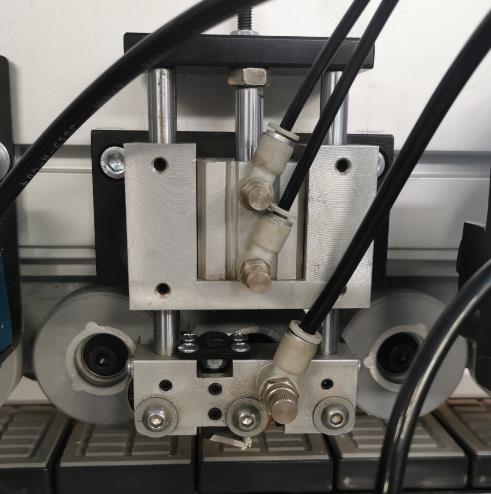You may have heard that you can't cut plywood with a hand saw. That's a myth.
Using a panel saw—10 p.p.i, teeth filed crosscut—on this 3/4" Walnut plywood produced not only a perfectly straight and square cut, but no tearing or fraying of the super-thin face veneer either. Adjustable Table Saw Fence

Pictured here is the back side of the cut, which usually tears the most as the saw exits the wood. I have gotten much worse quality cuts from my old table saw and even my fancy Festool track saw.
Here is a shot of a crossgrain cut on the face veneer that shows a negligible difference to the cut quality.
I made these cuts with no blue tape on the cut line, no zero clearance support underneath, just a well-tuned saw with a tooth geometry well-suited for the task at hand. (In this case 20° rake, 15° fleam. The relaxed rake eases the saw teeth into and out of the wood, and the fleam creates tiny little knives that slice across the grain making for very clean edges to the kerf.) However I urge you not to focus on this as the exact formula for a plywood saw but experiment for yourself. I'm sure even better results could be had if I wanted to create a plywood saw, but I would rather keep this little guy more of a fine finish blade than anything more specific.
If you're unfamiliar with terms like "rake" and "fleam," stay tuned and I'll produce a post explaining saw tooth geometry.
This "Hand Tool School" series is provided courtesy of Shannon Rogers, a/k/a The Renaissance Woodworker. Rogers is founder of The Hand Tool School, which provides members with an online apprenticeship that teaches them how to use hand tools and to build furniture with traditional methods.
Test it out; it only takes a single click to unsubscribe
Don't have an account? Join Now
Already have an account? Sign In
By creating a Core77 account you confirm that you accept the Terms of Use
Please enter your email and we will send an email to reset your password.

Maual Edge Sealing Machine Test it out; it only takes a single click to unsubscribe